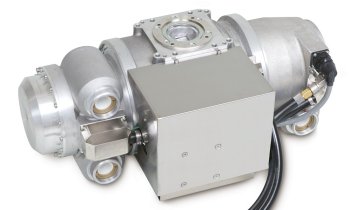Teheran - Emerging as a regional centre for diagnostic and interventional expertise
It was difficult to sing along in Farsi with the Iranian musical group at the Austria Centre Vienna, a first-ever event for the European Congress of Radiology. European radiologists were far more familiar with the work of their colleagues from Teheran, who have increased their participation in the ECR yearly and who have published their works in English for seven years in the Iranian Journal of Radiology.
2011 saw a record attendance of 137 Iranian radiologists, who came in strength to participate in the special programme ESR Meets Iran.
European Society of Radiology President Maximilian Reiser, an honorary member of the Iranian society, opened the scientific session Interventional Radiology: From Scratch To Innovation, which was dedicated to interventional radiology practices in Iran. In 2010, he had travelled to Teheran to speak at the annual Iranian radiology congress.
The relationship between the two societies began in 2007, when 30 Iranian radiologists attended. The number increased to 77 in 2010.
Iran has 1,600 radiologists for a population of over 75 million people, comparable with the United Kingdom, with 1,800 radiologists for a population of 61 million.
Abdolrasoul Sedaghat, President of the Iranian Society, outlined the education programme across 17 medical schools dedicated to training more than 300 radiologist assistants and residency programmes at university hospitals for a new generation of radiologists.
The ESR is a key partner in the Iranian effort to build fellowship programmes and encourage the participation of visiting professors.
Today, with its increasing specialisation and expertise in radiology, hospitals in Teheran are becoming reference centres, treating patients from across the Middle East and Central Asia, he said.
By highlight interventional procedures, the Iranian Society could fast forward over questions regarding the country's diagnostic capabilities, directly to current work in this practice area.
Hossein Ghanaati MD pioneered interventional radiology in 1994 at the Imam Khomeini Hospital, a 2,000-bed medical centre. Initially, the procedure included percutaneous laser disc decompensation and vertebroplasty for low back indications and today has advanced to procedures for aortic stenting and neuro-interventions.
A specialist in neurovascular interventions, Dr Ghanaati also heads the Advanced Diagnostic Interventional Radiology (AIDR) group that has established cooperative exchanges with hospitals throughout the country and is a pioneering centre for stem cell transplant research.
Neuroradiologist Kavous Firouznia MD led an effort to develop skills for uterine artery embolisation (UAE) to treat symptomatic fibroids, which affects 70% of women by the age of 50. ‘It challenged me,’ he said, ‘to return to earlier studies to master this procedure.’ At the ECR, he contributed a paper on evaluating the outcomes of 50 patients prospectively followed after UAE for 36-108 months. He also discussed suggested methods of radiation dose reduction during UAE procedures and reported the effects of UAE on fertility and pregnancy outcomes.
20.04.2011








